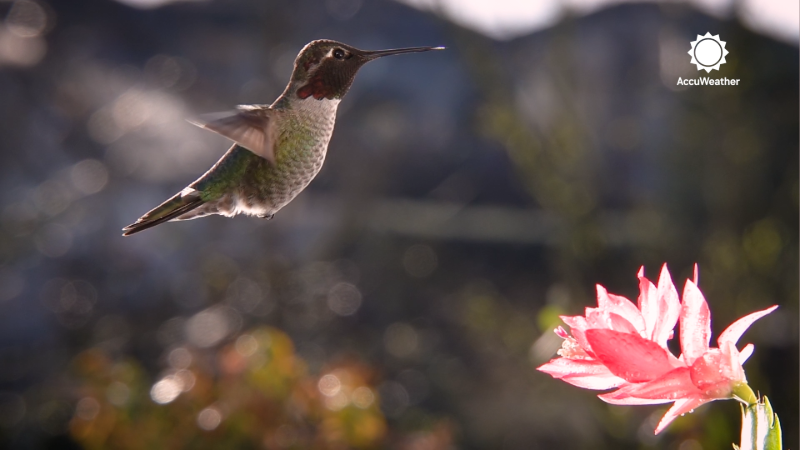Spring is hummingbird migration season: Interactive map shows where you can see them
Each spring, Hummingbird Central tracks sightings from around the country to give a real-time look at the hummingbird migration patterns for the season. See the most recent sightings below.

As North America emerges from winter, hummingbirds are embarking on great migrations that could pass through your area soon.
The small birds, known for their long beaks and ultra-fast wings that make them look like they're floating, begin heading north in late winter. Some species, like the Calliope Hummingbird, travel more than 5,000 miles each year, according to the American Bird Conservancy.
As flowers begin to bloom and give the little birds some nourishment, you might just start seeing them in your own backyard.
Throughout April, birdwatchers from California to Maine report hummingbird sightings, according to Project FeederWatch by the Cornell Lab of Ornithology and Birds Canada. Check out what parts of the country the birds might be headed to next.
2025 hummingbird migration patterns: See the map
Each spring, Hummingbird Central tracks sightings from around the country to give a real-time look at the hummingbird migration patterns for the season.
See the most recent sightings in the United States:
Here's where you may be able to see hummingbirds throughout April
Paste BN has compiled bird-sighting data from Project FeederWatch to show where hummingbirds are commonly sighted throughout the month of April. See if you might have them coming your way soon:
How to invite hummingbirds to your yard
With impossibly fast wings, small bodies and long distances to travel, hummingbirds must eat every 10 to 15 minutes and visit 1,000 to 2,000 flowers per day, according to the National Audubon Society.
If you want to boost your chances of seeing a hummingbird in your own backyard, the National Audubon Society says flowers, perches, insects and water are key. Here is what the organization suggests:
- Flowers: Plant native, flowering plants in your yard. Red or orange tubular flowers attract hummingbirds, as do natives like honeysuckle, bee balm, and hummingbird sage, which are rich with nectar.
- Perches: Give them somewhere to rest, both open and somewhat sheltered.
- Insects: Hummingbirds also get protein from small insects. Avoid pesticides in the yard, plant insect-pollinated plants in addition to hummingbird-pollinated plants, and try hanging overripe fruit near a hummingbird feeder to attract fruit flies.
- Bathtime: Hummingbirds like to bathe. Giving them fine, fresh water to do so could help attract them. Consider a misting device or a drop fountain.
Of course, hummingbird feeders also help give hummingbirds nectar, the necessary fuel for their long migrations.
Kinsey Crowley is a trending news reporter at Paste BN. Reach her at kcrowley@gannett.com. Follow her on X and TikTok @kinseycrowley or Bluesky at @kinseycrowley.bsky.social.